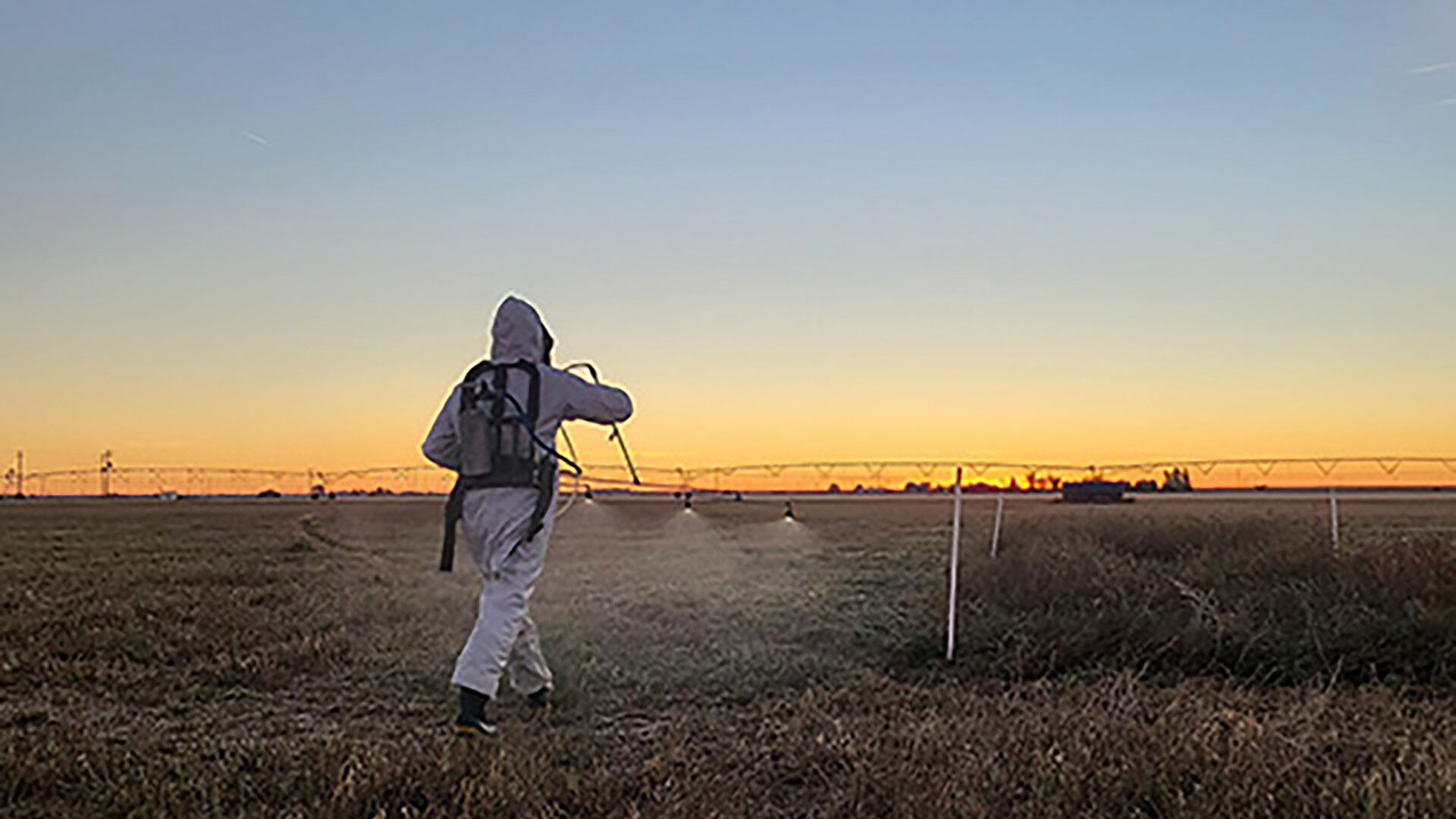Locations
|
|
Factorial trial design with 2 factors (chemical & timing) with complete randomization. Small plots with 4 replicates at 2 locations, Lethbridge County northwest of Coaldale AB and County of Newell just south of Rosemary AB.
|
Desiccation timing was carried out by Farming Smarter approximately 1 week before crops were fully mature (early timing), at maturity (standard timing) and approximately 1 week after full maturity (late timing). Each trial was sprayed at either dawn or dusk before so the chemicals would be absorbed into the leaves of the Alfalfa before the sun could activate them or evaporate the water on the leaf surface (making them less affective). Each trial was designed with 2.5-meter by 6-meter plots, leaving a small buffer between each plot in each block. A randomized complete block design was used with 4 blocks (replications).
Each block included each herbicide treatment (Fig. 1). A water volume of 160 L/acre was sprayed with a 2 m handheld CO2 propelled sprayer. Table 1 outlines the trial activity timeline. A visual efficacy rating was conducted on a scale of 0-100%, where 0 would be healthy plants not affected by the chemical and 100 would be brown, completed dried down plants due to the chemical. Photographs of each plot were taken right before harvest. The pictures were run through the EasyLeaf program to detect green plant material, referred to as greenness, and evaluate the efficacy of the treatments. Weights were collected for each plot, dockage weighed, and a corrected yield was calculated. A linear model with ANOVA statistics, using 95% confidence, were used to assess differences between the treatments.
Table 1: Research Activities Timing
Activity
|
Early Dates |
Standard Dates |
Late Dates |
| Application Timing Lethbridge |
Sept. 13 |
Sept. 24 |
Oct. 4 |
| Application Timing Rosemary |
Aug. 27 |
Sept. 7 |
Sept. 21 |
| Harvest Lethbridge |
Oct. 4 |
Oct. 4 |
Oct. 15 |
| Harvest Rosemary |
Sept. 18 |
Sept 18. |
Sept. 27 |
|
Treatments
|
| Untreated Check |
| Reglone Ion Early |
| Reglone Ion Mid |
|
Reglone Ion Late
|
|
Acetic Acid Early
|
|
Acetic Acid Mid
|
|
Acetic Acid Late
|
Note: Reglone Ion rate ≥ 160 L/acre water volume and 5.24 L/acre (unintended 4x rate); Acetic Acid ≥ 160 L/acre water volume and 20% concentration.

|
| Figure 1: Trial diagram for Lethbridge field, illustrating the design methods of each trial. |
|


